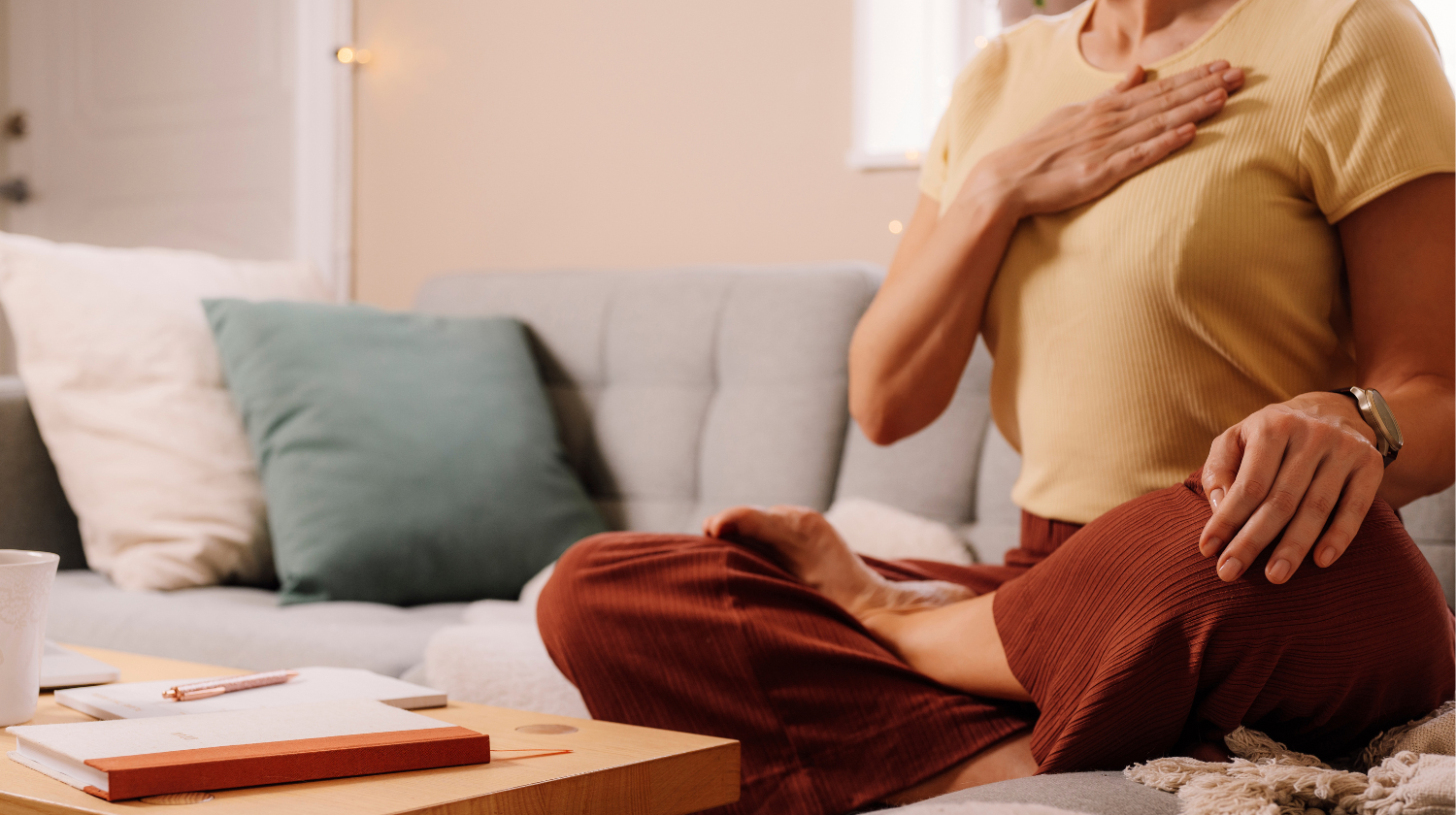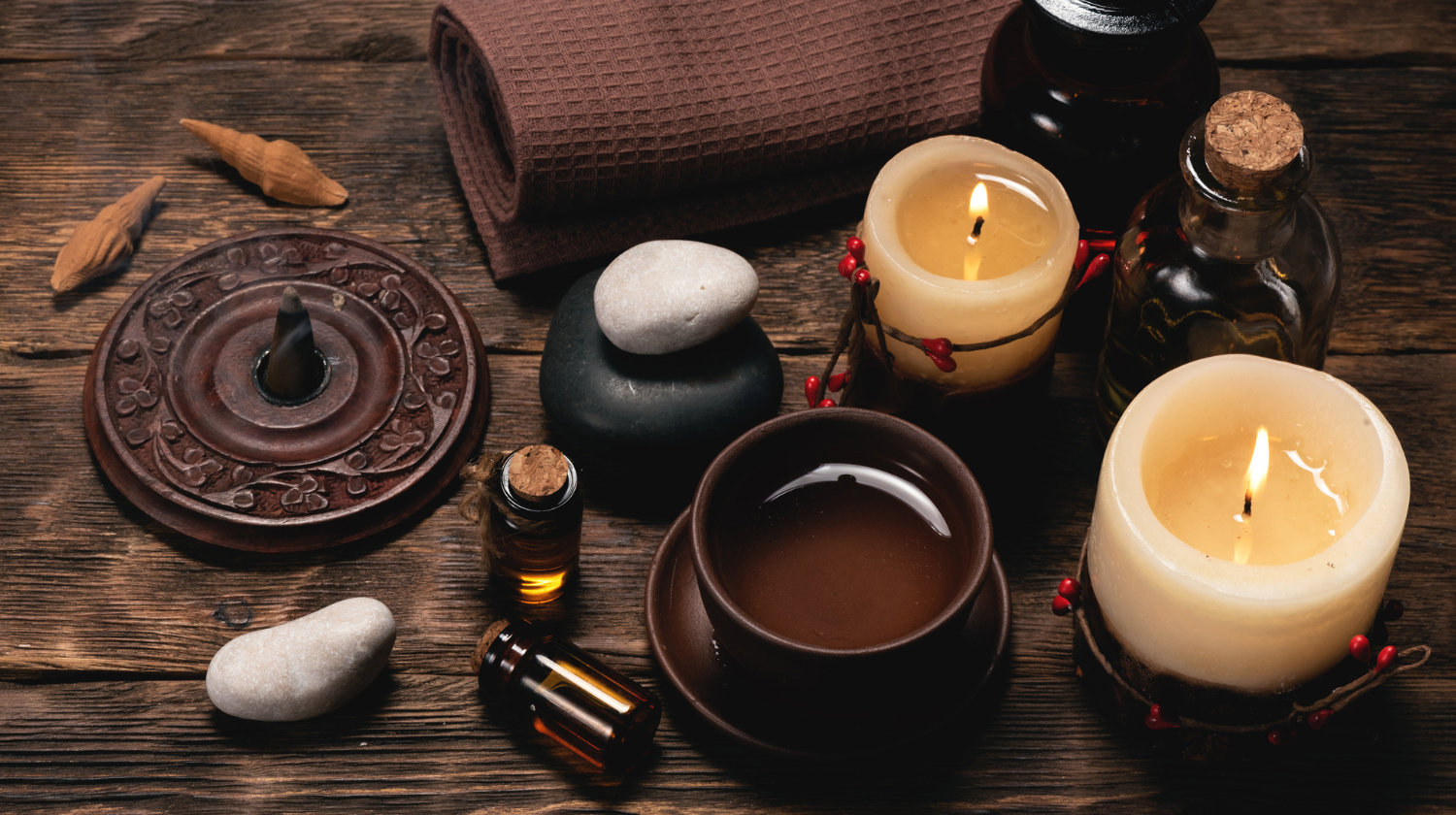Best Sleeping Position For Anxiety You May Not Know 2024

In almost every range of supplements, there will be a sleep formulation. Why is that? Because most people know that getting a quality night of sleep is important for overall health. In fact, even short-term sleep deprivation can have a detrimental effect on mental health. While the mechanism of action for this isn’t completely clear, cellular waste is thought to be cleared from your brain[1] when you get a good night’s sleep. Kind of like a garbage disposal service!
What isn’t as widely known is that sleep positions can affect both the quality of your sleep and your mental health, making it more challenging to manage your emotions and feelings during your waking hours. So what is the best sleep position for anxiety? Let’s find out.
What Sleep Position Is Best For Anxiety?
The position you choose to sleep in can impact your mental health. Spending more time sleeping in supine positions (on your back) was linked to a higher risk of depression and anxiety. The best sleeping position for your mental health is thought to be on your side (lateral).
How Sleeping Positions Impact Your Mental Health
There are a few ways that sleep posture affects your mental health. One is reduced sleeping quality due to poor sleeping posture.[2] Poor sleep quality may include delayed sleep onset, waking up frequently during the night, and poor sleep continuity. This may lead to or worsen existing mental health conditions, hinder memory, and elevate stress levels.
Adequate sleep is needed to regenerate parts of your brain[3] and regulate neuron functioning so everything works as it should. If neurons cannot properly function, it will affect behavior. When you sleep, you go through different sleep stages, each of which is essential for neuron regeneration, forming memories, and generating synaptic connections. It is possible to then end up in a vicious cycle, where poor mental health could be due to lack of sleep or causing lack of sleep.[4]
So, what is the sleeping posture that could be hindering your ability to sleep well? Studies suggest[5] that people who prefer to sleep on their backs have lower clearance of specific peptides in their brain that can affect health than those who opt for other sleeping positions, such as the side or stomach. A buildup of this peptide, called beta-amyloid, is responsible for creating plaques in the brain associated with Alzheimer’s, depression, and anxiety.
Removing beta-amyloid from the brain is done by cerebrospinal fluid transport.[6] This pathway is known as the glymphatic system, which is somewhat similar to the lymphatic system. If your glymphatic system is not clearing beta-amyloid, it accumulates and creates plaques, which have been associated with anxious depressive symptoms[7] in older adults in several studies.[8] It is suggested that cerebrospinal fluid transport may be most effective in the lateral position,[5] which means lying on your side.
The Positives And Negatives Of Common Sleeping Positions
The main sleeping positions[9] are left or right lateral (on your side), prone (stomach sleeping), and supine (on your back).
Side Sleeping
Lateral is the most common sleeping position and has also been associated with improved cerebral blood flow, particularly the right lateral position[10] rather than the left side. The side sleeping position has also been associated with better overall sleep quality[9] and less tossing and turning, which makes it the best sleep position.
So, are there any downsides to sleeping on your right side? That may depend on if you twist your spine when you do it, as some sleepers do. Twisting your spine in your sleep is associated with a higher likelihood of waking in physical pain,[2] though sleeping in a lateral position without twisting is beneficial for the spine.
Sleeping On Your Back
Sleeping on your back means a higher likelihood of poor sleep quality[11] and breathing difficulties[12] such as sleep apnea, not to mention snoring! When you sleep on your back, gravity can pull your tongue and other soft tissues back into the airway, leading to these issues. On the upside, sleeping on your back with your head propped slightly on a pillow may help reduce acid reflux symptoms, and not rubbing your face all night on a pillow may reduce wrinkles.
Stomach Sleeping
Stomach sleeping, or the supine position, has been identified as a risk factor for sudden infant death syndrome.[13] Lower birth weights have been recorded in children[14] whose pregnant women were stomach sleepers in late pregnancy.
If you sleep in the fetal position, psychology might have the answer as to why. It has been suggested that people who sleep in the fetal position are more introverted, tend to be more anxious, and display a greater need for security and comfort. However, this doesn’t have the research to back it up.
Some Tips To Sleep With Anxiety
If an overactive mind is hindering your ability to sleep, there are several natural remedies for anxiety you can try to calm things down. If nothing works, it may be time to consider professional help to get your sleep schedule back on track.
Use A Weighted Blanket

Weighted blankets help to reduce anxiety and promote relaxation. Studies show that sleeping with a weighted blanket[15] may help improve anxiety symptoms, though more research is needed to determine if they can enhance sleep quality. Pair that with a supportive pillow for an extra cozy snooze!
Practice Breathing Exercises

Deep breathing is one of the best ways to relax your body and reduce stress before bedtime. Breathing exercises such as 4-7-8 breathing or progressive muscle relaxation can help reduce anxiety and promote better sleep.
Do Some Light Stretching Or Yoga

Light stretching can help to relax the body and mind, making it easier to fall asleep. Doing light yoga poses before bed can also help reduce insomnia and anxiety and can be an excellent exercise to reduce back pain that may be aggravated by sleeping.
Set Up Relaxing Rituals

Establishing a set of calming activities before bed can help to reduce anxiety and promote better sleep. This could include taking a warm shower/bath, drinking herbal tea, reading a book or magazine, or listening to soothing music. Choose activities conducive to relaxation, and make sure you do them each night in the same order.
Try Aromatherapy

Aromatherapy is an alternative therapy using essential oils and aromas to promote relaxation and ease feelings of stress or anxiety. You can buy a diffuser for your bedroom or just add a few drops of oil to your pillowcase. The best essential oils for sleep and relaxation are lavender, chamomile, and ylang-ylang.
Meditate

Meditation is a great way to calm your mind and body before bedtime. Numerous guided meditation apps can help you learn different techniques to use during your practice. Try to set aside 10 minutes each night for meditation or mindfulness exercises.
Avoid Caffeine And Alcohol

Caffeine and alcohol are both sleep disruptors, so try to avoid consuming them late in the day. Swap out coffee for herbal tea as your evening beverage, and if you choose to indulge in a glass of wine with dinner, opt for something low in alcohol content.
The Bottom Line
While sleeping on your right side seems to be the best option for your mental health, it is important not to beat yourself up if you just can’t do it. Sleep in any position is better than not sleeping at all; we naturally move around at night into a new sleep position multiple times anyway. However, if you are one of those lucky people who can fall asleep in any position, try the lateral one, and see if it improves the quality of your sleep and overall mood.
+ 15 sources
Health Canal avoids using tertiary references. We have strict sourcing guidelines and rely on peer-reviewed studies, academic researches from medical associations and institutions. To ensure the accuracy of articles in Health Canal, you can read more about the editorial process here
- Xie, L., Kang, H., Xu, Q., Chen, M.J., Liao, Y., Thiyagarajan, M., O’Donnell, J., Christensen, D.J., Nicholson, C., Iliff, J.J., Takano, T., Deane, R. and Nedergaard, M. (2013). Sleep Drives Metabolite Clearance from the Adult Brain. Science, [online] 342(6156), pp.373–377. doi:https://doi.org/10.1126/science.1241224.
- Cary, D., Jacques, A. and Briffa, K. (2021). Examining relationships between sleep posture, waking spinal symptoms and quality of sleep: A cross sectional study. PLOS ONE, [online] 16(11), p.e0260582. doi:https://doi.org/10.1371/journal.pone.0260582.
- Eugene, A.R. and Masiak, J. (2015). The Neuroprotective Aspects of Sleep. MEDtube science, [online] 3(1), pp.35–40. Available at: https://www.ncbi.nlm.nih.gov/pmc/articles/PMC4651462/.
- Tao, X., Chen, D., Fan, Y., Zhang, L., Shan, H., Wei, Y., Yu, X., Zhong, T., Wang, L., Chung, S.K., Yu, Y. and Xiao, Y. (2021). A cross-sectional study for the mental health status and sleep quality among college students in Macao during the COVID-19 pandemic. PeerJ, [online] 9, p.e12520. doi:https://doi.org/10.7717/peerj.12520.
- Lee, H., Xie, L., Yu, M., Kang, H., Feng, T., Deane, R., Logan, J., Nedergaard, M. and Benveniste, H. (2015). The Effect of Body Posture on Brain Glymphatic Transport. Journal of Neuroscience, [online] 35(31), pp.11034–11044. doi:https://doi.org/10.1523/jneurosci.1625-15.2015.
- Hauglund, N.L., Pavan, C. and Nedergaard, M. (2020). Cleaning the sleeping brain – the potential restorative function of the glymphatic system. Current Opinion in Physiology, [online] 15, pp.1–6. doi:https://doi.org/10.1016/j.cophys.2019.10.020.
- Donovan, N.J., Locascio, J.J., Marshall, G.A., Gatchel, J., Hanseeuw, B.J., Rentz, D.M., Johnson, K.A. and Sperling, R.A. (2018). Longitudinal Association of Amyloid Beta and Anxious-Depressive Symptoms in Cognitively Normal Older Adults. American Journal of Psychiatry, [online] 175(6), pp.530–537. doi:https://doi.org/10.1176/appi.ajp.2017.17040442.
- Mendez, M.F. (2021). The Relationship Between Anxiety and Alzheimer’s Disease1. Journal of Alzheimer’s Disease Reports, [online] 5(1), pp.171–177. doi:https://doi.org/10.3233/adr-210294.
- Zhang, Y., Xiao, A., Zheng, T., Xiao, H. and Huang, R. (2022). The Relationship between Sleeping Position and Sleep Quality: A Flexible Sensor-Based Study. Sensors, [online] 22(16), p.6220. doi:https://doi.org/10.3390/s22166220.
- Girolami, S., Tardio, M., Loredana, S., Di Mattia, N., Micheletti, P. and Di Napoli, M. (2022). Sleep body position correlates with cognitive performance in middle-old obstructive sleep apnea subjects. Sleep Medicine: X, [online] 4, p.100050. doi:https://doi.org/10.1016/j.sleepx.2022.100050.
- De Koninck, J., Gagnon, P. and Lallier, S. (1983). Sleep Positions in the Young Adult and Their Relationship with the Subjective Quality of Sleep. Sleep, [online] 6(1), pp.52–59. doi:https://doi.org/10.1093/sleep/6.1.52.
- Oksenberg, A., Khamaysi, I., Silverberg, D.S. and Tarasiuk, A. (2000). Association of Body Position With Severity of Apneic Events in Patients With Severe Nonpositional Obstructive Sleep Apnea. Chest, [online] 118(4), pp.1018–1024. doi:https://doi.org/10.1378/chest.118.4.1018.
- da Silva, B.G.C., da Silveira, M.F., de Oliveira, P.D., Domingues, M.R., Neumann, N.A., Barros, F.C. and Bertoldi, A.D. (2019). Prevalence and associated factors of supine sleep position in 3-month-old infants: findings from the 2015 Pelotas (Brazil) Birth Cohort. BMC Pediatrics, [online] 19(1). doi:https://doi.org/10.1186/s12887-019-1534-3.
- Anderson, N.H., Gordon, A., Li, M., Cronin, R.S., Thompson, J.M.D., Raynes-Greenow, C.H., Heazell, A.E.P., Stacey, T., Culling, V.M., Wilson, J., Askie, L.M., Mitchell, E.A. and McCowan, L.M.E. (2019). Association of Supine Going-to-Sleep Position in Late Pregnancy With Reduced Birth Weight. JAMA Network Open, [online] 2(10), p.e1912614. doi:https://doi.org/10.1001/jamanetworkopen.2019.12614.
- Eron, K., Kohnert, L., Watters, A., Logan, C., Weisner-Rose, M. and Mehler, P.S. (2020). Weighted Blanket Use: A Systematic Review. The American Journal of Occupational Therapy, [online] 74(2), p.7402205010p1-7402205010p14. doi:https://doi.org/10.5014/ajot.2020.037358.



